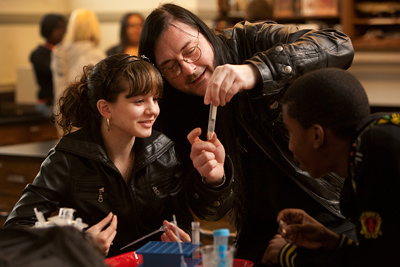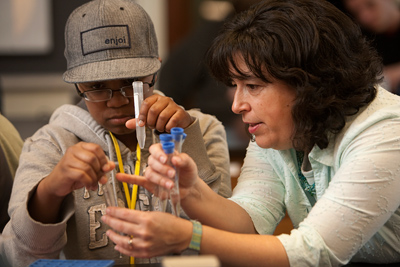High schoolers make ice cream, pack their DNA and reach into guts of a live cow
By Susan S. Lang


Cornell students aren't the only ones working away in labs across campus. The Cornell Institute for Biology Teachers (CIBT), for example, hosted 38 high school students from the Institute of Technology at Syracuse (N.Y.) Central April 9 for a campus visit and host of science activities.
"The students did a DNA extraction activity where they collected their own cheek cells and prepared DNA from them, then sealed them into a special vial that they took with them," said Laurel Southard, director of undergraduate research and outreach for CIBT.
In addition, food scientists Kathryn Boor and Alicia Orta-Ramirez showed the students how to make ice cream and discussed career options in the food science field. And Debbie Cherney, associate professor of animal science, invited the students to feel the inside of Cornell's "holey" fistulated cow, Daisy, a Holstein who has an opening in the largest compartment of her stomach, called the rumen fistula, allowing humans to peek inside and study her metabolism.
The trip was motivated by the students' teacher, Anne Marie Furcinito, who was introduced to CIBT in January when she attended a workshop for new and prospective science teachers.
CIBT, funded by the Howard Hughes Medical Institute and the New York State Center for Advanced Technology, offers science workshops free of charge to K-12 teachers and school administrators as well as a lending "library" of such biology kits as "Relationships and Biodiversity," "Pipette Practice," "Blood Pressure Cuffs" and "The Building Blocks of Life."
The trip was supported by the federal Gaining Early Awareness and Readiness for Undergraduate Programs (GEAR UP), which is designed to increase the number of low-income students who are prepared to enter and succeed in postsecondary education.
Media Contact
Get Cornell news delivered right to your inbox.
Subscribe